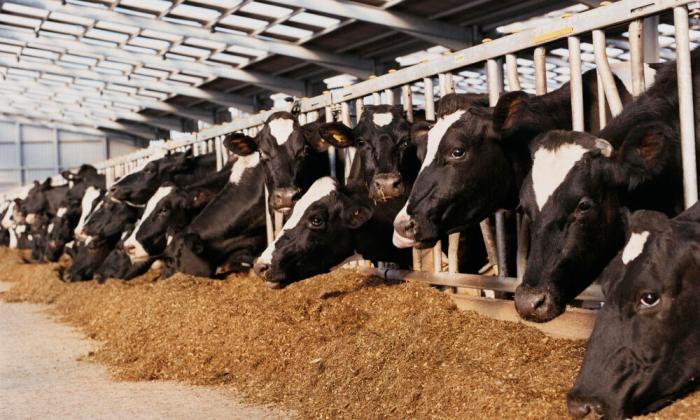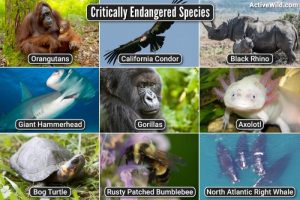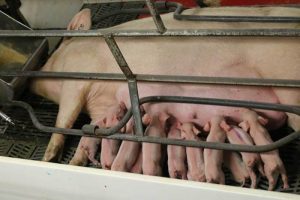
Dive into the world of Livestock feed and nutrition, where we explore the key aspects of ensuring healthy and thriving animals through proper diet and nutrition. Get ready for an informative and entertaining journey!
From the importance of balanced diets to the impact of feed quality, this topic covers everything you need to know about keeping your livestock in top shape.
Livestock Feed and Nutrition

Proper nutrition is essential for the health and well-being of livestock. It not only impacts their growth and productivity but also plays a crucial role in disease prevention and overall animal welfare.
Nutritional Needs of Different Types of Livestock
- Cows: Cattle require a diet rich in roughage, such as hay and grass, along with grains for energy. They also need minerals like calcium and phosphorus for bone health.
- Pigs: Swine need a balanced diet consisting of grains, protein sources like soybean meal, vitamins, and minerals. They also benefit from access to pasture for foraging.
- Poultry: Chickens and other poultry birds need a diet high in protein for egg production and growth. This includes feed ingredients like corn, soybean meal, and fish meal.
Key Components of a Balanced Diet for Livestock
- Protein: Essential for muscle development and growth.
- Carbohydrates: Provide energy for daily activities and growth.
- Fats: Serve as a concentrated source of energy in the diet.
- Vitamins: Necessary for various metabolic functions and overall health.
- Minerals: Important for bone development, reproduction, and overall well-being.
Common Feed Ingredients Used in Livestock Nutrition
- Corn: A staple in many livestock diets, providing carbohydrates and energy.
- Soybean Meal: A rich source of protein essential for growth and development.
- Alfalfa: High in protein and fiber, often used as a source of roughage for ruminants.
- Grains (e.g., barley, oats): Provide energy and nutrients for various livestock species.
Animal Nutrition
Proper nutrition is essential for the health and well-being of livestock. It plays a crucial role in ensuring optimal growth, reproduction, and overall productivity of animals.
Role of Proteins, Carbohydrates, Fats, Vitamins, and Minerals
- Proteins: Essential for growth, repair of tissues, and production of enzymes and hormones.
- Carbohydrates: Provide energy for daily activities and metabolic processes.
- Fats: Serve as a concentrated source of energy and aid in the absorption of fat-soluble vitamins.
- Vitamins: Necessary for various physiological functions, such as immunity and reproduction.
- Minerals: Play a vital role in bone formation, enzyme function, and overall health maintenance.
Significance of Water Intake
Water is crucial for maintaining proper hydration, digestion, and regulation of body temperature in livestock. It is essential for nutrient absorption and elimination of waste products from the body. Adequate water intake is vital for overall health and productivity.
Sample Feed Ration for Cattle
| Ingredient | Percentage |
|---|---|
| Hay | 50% |
| Grains | 30% |
| Protein Supplement | 10% |
| Mineral Mix | 5% |
| Vitamin Supplement | 5% |
Factors to Consider in Diet Planning
- Animal’s age, weight, and physiological status
- Daily nutrient requirements
- Feed availability and cost
- Health and reproductive goals
- Environmental conditions
Feed Processing and Quality
In livestock farming, feed processing plays a crucial role in ensuring the quality and nutritional value of the feed. Different methods are used to process livestock feed, such as grinding and pelleting, each with its advantages and considerations.
Methods of Processing Livestock Feed
- Grinding: This method involves breaking down the feed ingredients into smaller particles, making it easier for animals to digest and absorb nutrients.
- Pelleting: Feed is compressed into pellets using heat and pressure, improving feed efficiency and reducing wastage.
Common Issues Related to Feed Quality
- Poor Ingredient Quality: Using low-quality ingredients can lead to nutritional deficiencies and health issues in livestock.
- Mold and Contamination: Improper storage and handling can result in mold growth and contamination, affecting feed quality.
- Inconsistent Nutrient Levels: Variations in nutrient levels within the feed can impact animal performance and health.
Quality Indicators for Evaluating Livestock Feed
- Protein Content: Ensuring adequate protein levels for growth and development.
- Fiber Content: Balancing fiber content for proper digestion and gut health.
- Moisture Levels: Monitoring moisture levels to prevent mold growth and spoilage.
Effects of Poor-Quality Feed on Livestock
- Reduced Growth and Performance: Animals fed with poor-quality feed may experience stunted growth and decreased production.
- Health Issues: Nutritional deficiencies and contaminants in feed can lead to various health problems in livestock.
- Economic Losses: Poor-quality feed not only impacts animal health but also results in financial losses for farmers due to decreased productivity.
Wild Animals’ Nutrition

Wild animals have unique nutritional needs that differ from those of captive animals. The challenges of providing balanced nutrition for wild animals in captivity are complex due to their specific dietary requirements and natural feeding behaviors. Environmental factors play a crucial role in shaping the feeding habits of wild animals, and foraging behavior is essential for their overall nutrition.
Nutritional Needs of Wild Animals
Wild animals have evolved to thrive on diets that are specific to their natural habitats and prey availability. Captive animals often require specialized diets to meet their nutritional needs, which can be challenging to replicate in a captive setting.
Challenges of Providing Balanced Nutrition for Wild Animals in Captivity
- The lack of variety in a captive environment can lead to nutritional deficiencies in wild animals.
- Ensuring that captive wild animals receive the correct balance of proteins, fats, vitamins, and minerals can be a constant challenge.
- Some wild animals have specific dietary requirements that are difficult to replicate in captivity, such as the need for live prey or access to certain plant species.
Impact of Environmental Factors on Feeding Habits of Wild Animals
- The availability of food sources in the wild can vary seasonally, leading wild animals to adapt their feeding habits accordingly.
- Competition for food among wild animals can influence their feeding behaviors and the types of food they consume.
- Environmental changes, such as deforestation or climate change, can disrupt the natural food sources of wild animals, affecting their nutritional intake.
Importance of Foraging Behavior in Wild Animal Nutrition
Foraging behavior is crucial for wild animals to obtain essential nutrients, maintain physical health, and exhibit natural behaviors. It allows wild animals to engage their senses, stimulate their minds, and fulfill their instinctual need to hunt and gather food.
Ending Remarks
As we conclude our exploration of Livestock feed and nutrition, remember that a well-rounded diet is the foundation of animal health and performance. Keep these insights in mind to ensure your animals lead a healthy and happy life.
Expert Answers
What are the key components of a balanced diet for livestock?
A balanced diet for livestock includes proteins, carbohydrates, fats, vitamins, and minerals to meet their nutritional needs.
How does poor-quality feed affect livestock health and performance?
Poor-quality feed can lead to nutritional deficiencies, reduced growth rates, and overall health issues in livestock.
What factors should be considered when formulating a diet plan for livestock?
Factors such as age, weight, breed, activity level, and specific nutritional requirements of the livestock should be considered when creating a diet plan.






